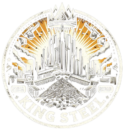Aluminium
Aluminum: The Versatile Metal Shaping Our World
Aluminum, the third most abundant element in the Earth’s crust, is a lightweight, silver-white metal known for its versatility and wide range of applications. Discovered in the early 19th century, aluminum has become an indispensable material in various industries, from aerospace to packaging, due to its unique properties, including its strength, durability, and recyclability.
A Brief History
Although aluminum compounds have been used for centuries, pure aluminum was first isolated by Danish chemist Hans Christian Ørsted in 1825. However, it was not until the late 19th century that advancements in electrolysis made large-scale production possible, making aluminum more accessible and marking the beginning of its widespread use.
Properties and Characteristics
Aluminum is renowned for its remarkable properties. It is incredibly lightweight, weighing about one-third as much as steel or copper, making it an excellent choice for applications where reducing weight is essential, such as in aircraft and vehicles. Despite its low density, aluminum is strong and can be alloyed with other metals like copper, magnesium, and zinc to enhance its strength and create materials with specific properties for various applications.
Another significant advantage of aluminum is its resistance to corrosion, which is due to a thin layer of aluminum oxide that forms on its surface when exposed to air. This layer protects the metal underneath from further degradation, making aluminum an ideal material for outdoor applications and in environments prone to corrosion.
Aluminum’s thermal and electrical conductivity is another reason for its popularity. It conducts electricity and heat nearly as well as copper, making it invaluable in electrical transmission lines and heat exchangers. Moreover, its reflectivity makes it an excellent choice for light fixtures and rescue blankets.
Applications of Aluminum
The applications of aluminum are nearly endless, thanks to its versatile properties. In the transportation industry, aluminum is used to manufacture body panels, frames, and parts of cars, trucks, bicycles, and airplanes. Its lightweight nature contributes to improved fuel efficiency and reduced emissions.
In construction, aluminum is used in windows, doors, siding, and roofing. Its strength, lightweight, and resistance to corrosion make it an ideal material for building structures, especially in areas susceptible to severe weather conditions.
Aluminum’s barrier properties make it an excellent material for packaging. It is used in cans, foil, and packaging materials to protect food, beverages, and pharmaceuticals from moisture, oxygen, and contaminants.
In electronics, aluminum is used in the manufacture of smartphones, tablets, laptops, and other devices. Its ability to conduct electricity and dissipate heat makes it invaluable in electronic circuits and components.
Environmental Impact and Sustainability
Aluminum is among the most recyclable materials on the planet. Recycling aluminum saves approximately 95% of the energy required to produce it from raw materials, reducing its environmental impact significantly. The recycling process can be repeated indefinitely without loss of quality, making aluminum a model material for circular economy initiatives.
Despite its advantages, the production of aluminum is energy-intensive, primarily when produced from bauxite ore through the Bayer process and the Hall-Héroult process. These processes are responsible for significant CO2 emissions. However, the industry is moving towards more sustainable practices, including using renewable energy sources and developing more efficient production methods.
Innovations and Future Prospects
The future of aluminum looks promising, with ongoing research and innovation focusing on enhancing its properties and finding new applications. Scientists are developing new alloys with improved strength, flexibility, and resistance to extreme conditions for use in aerospace, automotive, and military applications.
There is also a growing interest in using aluminum in renewable energy technologies, such as solar panels and wind turbines, due to its conductivity, durability, and recyclability. These applications highlight aluminum’s role in supporting sustainable development and the transition to a low-carbon economy.
Moreover, the development of new manufacturing techniques, such as additive manufacturing (3D printing), opens up new possibilities for aluminum in complex, high-performance components and structures.
Conclusion
Aluminum has come a long way since its discovery, from a precious metal to one of the most used metals in the world. Its unique properties and versatility have made it an essential material in our daily lives and the backbone of modern industries. As we strive for more sustainable and efficient use of resources, aluminum stands out as a material that not only meets these demands but also drives innovation and development across various sectors. With continued advancements in aluminum production and recycling, we can expect this remarkable metal to play an even more significant role in shaping a sustainable future.
